 The most famous bite mark case in the US, and perhaps the world, is that of serial killer Ted Bundy. On Jan. 15, 1978, Bundy broke into the Chi Omega sorority on the Florida State University campus, assaulting and killing three women. During the crime, Bundy left a bite mark on the buttocks of Lisa Levy, whom he raped and killed. It was this bite mark that was primarily responsible for his conviction. He was executed in Florida’s electric chair on Jan. 24, 1989. Shortly before his execution, he confessed to 30 other murders in seven states, but it is believed that he may have been responsible for as many as 100 deaths.
The most famous bite mark case in the US, and perhaps the world, is that of serial killer Ted Bundy. On Jan. 15, 1978, Bundy broke into the Chi Omega sorority on the Florida State University campus, assaulting and killing three women. During the crime, Bundy left a bite mark on the buttocks of Lisa Levy, whom he raped and killed. It was this bite mark that was primarily responsible for his conviction. He was executed in Florida’s electric chair on Jan. 24, 1989. Shortly before his execution, he confessed to 30 other murders in seven states, but it is believed that he may have been responsible for as many as 100 deaths.
Here are photos of the bite mark on Lisa Levy’s buttocks, and the wax impresstion that was made of Bundy’s lower dentition:
Now, this may seem like validation for the discipline of forensic odontology, but in this respect, it was actually a case in which they just got “really lucky”. Ted Bundy had incredibly crooked teeth – to the point of being unique among the unique. This, in combination with his physical presence in the area and some other factors produced a conviction. It has never been questioned that this was a valid conviction, and it was confirmed by his subsequent confessions.
Unfortunately, there are all too many (documented) cases in which people were convicted and sent to prison based upon bite mark evidence that proved to be wrong. Here is just a sampling of cases in which the defendant was convicted based upon bite mark evidence, and subsequently exonerated:
• Willie Jackson (Louisiana)
• Calvin Washington (Texas)
• James O’Donnell (New York)
• Robert Lee Stinson (Wisconsin)
• Kennedy Brewer (Mississippi)
• Roy Brown (NY)
• Douglas Prade (OH)
Bite mark evidence, as with most forensics, is a discipline based upon conclusions resulting from flawed inductive reasoning and an absence of true scientific and statistical validation. In addition to that, the discipline has been woefully lacking in controls on process, procedure, and competence. In the field of forensic odontology, as recently as 2010, these problems still existed with bite mark analysis:
• New Forensic Odontologists have too little experience in bite mark analysis.
• There is no requirement to seek second (or third) opinions in bite mark cases.
• There is no mandatory proficiency testing for certified forensic odontologists.
There are even forensic odontologists who have realized the faults and flaws in the discipline, and are openly questioning it. In Mississippi, forensic dentist Michael West, since 1980, has worked on what he estimates to be 16,000 cases, testifying as an expert in 81 of them. 38 of these were in Mississippi; leading to convictions sending people to prison and some to death row. Dentist Now Doubts Science of Bite Analysis
The major issues are that human dentition has not been scietifically determined to be “unique’, and human skin is so flexible, compressible, and expandable that it cannot be relied upon to accurately maintain and display an impression made on it.
The NAS Report and forensic odontology:
By now, I hope you are all familiar with the NAS Report (if not, see here). This is what the NAS Report has to say about forensic odontology (Ch. 5, pp. 175-176):
(1) The uniqueness of human dentition has not been scientifically established.
(2) The ability of the dentition, if unique, to transfer a unique pattern to human skin and the ability of the skin to maintain that uniqueness has not been scientifically established.
(3) The ability to analyze and interpret the scope or extent of distortion of bite mark patterns on human skin has not been demonstrated.
(4) The effect of distortion on different comparison techniques is not fully understood and therefore has not been quantified.
(5) A standard for the type, quality, and number of individual characteristics required to indicate that a bite mark has reached a threshold of evidentiary value has not been established.
And in the summary paragraph on the subject, the NAS Report states:
“In numerous instances, experts diverge widely in their evaluations of the same bite mark evidence, which has led to questioning of the value and scientific objectivity of such evidence.”
_______________________________________________________
There are some within the forensic odontology community who are striving to bring statistical and scientific validation to the discipline. See my previous post on this subject here.
Until such time that forensic odontology can scientifically and statistically confirm and validate its conclusions, it should not be relied upon to determine an individual identification.
However, again as with most forensics, bite mark analysis can be statistically valid in excluding a suspect from consideration.

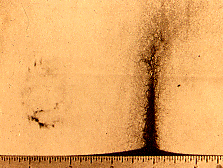

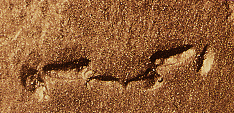


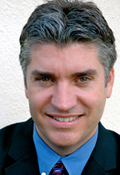


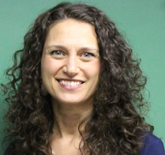
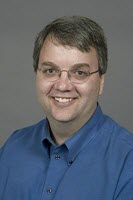










Pingback: About Bite Mark Evidence – Forensic Odontology « Upside Down
How can bite mark analysis use statistics to exclude a suspect?
Ann,
Good question. This is not really “statistics”, but “exclusion” work like this: If a perpetrator left blond hair at a crime scene, this would eliminate a suspect with black hair. In the case of a bite mark, if the bite mark shows that the “biter” was missing the two top front teeth, this would exclude a suspect who had both natural top front teeth.
It’s “statistically valid” because the two conditions are “mutually exclusive”. If a person has their two top front teeth, they can’t also be missing their two top front teeth.
Pingback: PBS Nova – “Forensics on Trial” – a Review | Wrongful Convictions Blog
Pingback: Why I Think the US Justice System is Broken – and Why It’s Not Getting Fixed | Wrongful Convictions Blog
Pingback: The Junk Science of Bite Marks Needs to Go Away | Wrongful Convictions Blog
it seems beyond ridiculous that states who require hundreds of hours of training for certification for interior design and hair dressers, has no standards for forensic ‘Dentistry, maybe they need something like state magazines do, listing state top docs, (where they list the doctors most recommended by other doctors in their field). I will say as a chronic sufferer of night bruxism my teeth change on a monthly if not weekly basis…
I wonder if those same experts are the ones who use x-rays for identifying corpses ( now there is DNA, but sometimes there’s no DNA compare, can we trust these dental IDs?
Pingback: 1986 Junk Science article Prosecutors love to use – Predicting and “Curing” Recidivism | FORENSICS and LAW in FOCUS @ CSIDDS | News and Trends
Thanks for sharing your knowledge on bite mark evidence. It is very useful article. It improved my knowledge of forensic dentistry. Keep sharing such informative articles.
Pingback: How Accurate Is Extremely Wicked, Shockingly Evil and Vile? - Culture Eater